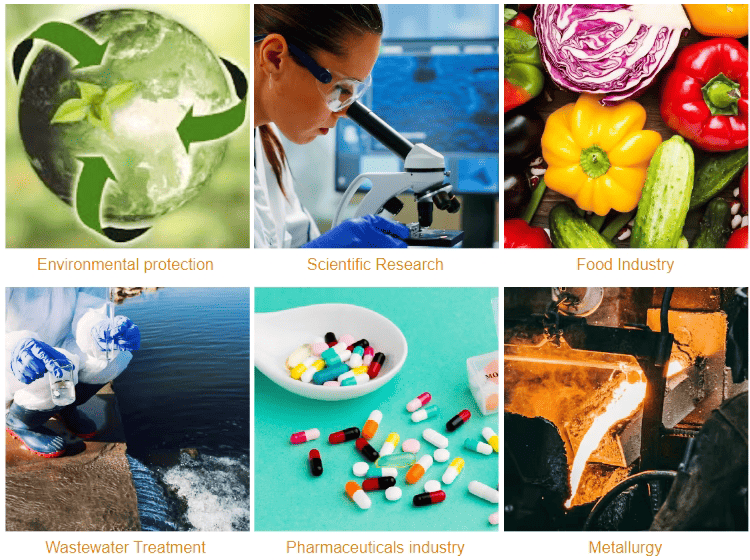
A pH meter consists of a pH electrode and a reference electrode. The pH electrode is usually made of glass and responds to the concentration of hydrogen ions ([H⁺]).
When the pH electrode is immersed in the liquid to be measured, the electrode surface reacts with the hydrogen ions in the liquid to form a potential difference. This potential difference is proportional to the pH value of the liquid.
The electronic circuit inside the pH meter converts the potential difference into a digital signal and displays it on the screen, so that the user can read the pH value directly.
Many modern pH meters are equipped with temperature sensors that can automatically perform temperature compensation to improve the accuracy of the measurement.
A conductivity meter consists of two electrodes, usually made of platinum or stainless steel. The distance and area between the electrodes affect the measurement results.
When an electric current passes through the liquid to be measured, the ions in the liquid conduct electricity. The conductivity meter measures the current flowing through the electrodes by applying a certain voltage.
According to Ohm's law (V = IR), conductivity (σ) can be calculated from the measured current (I) and the applied voltage (V). Conductivity is proportional to the concentration of dissolved ions in the liquid.
Similar to pH meters, conductivity meters are also usually equipped with temperature sensors to compensate for different temperatures and ensure the accuracy of the measurement results.
pH and conductivity meters calculate pH and conductivity by measuring the potential difference and current of the liquid through the interaction of electrodes with the liquid to be tested. These instruments play an important role in water quality monitoring, environmental protection and industrial applications.
